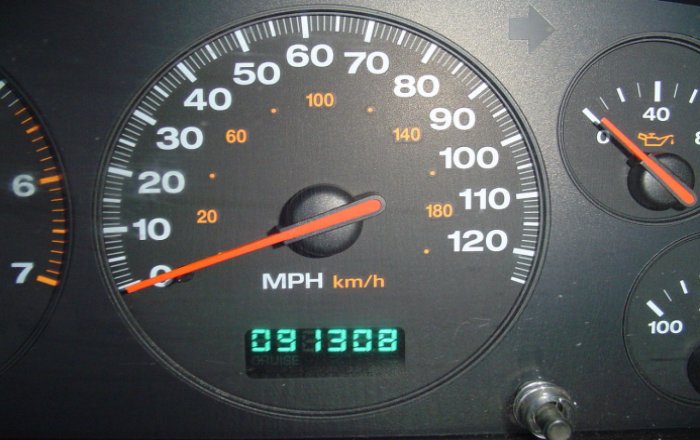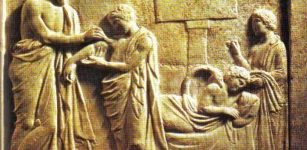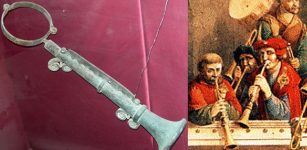First Odometer Was Invented By Vitruvius Around 15 BC
Conny Waters - AncientPages.com - People ask many questions and are curious about inventions and discoveries. Here is one question: When was the odometer invented?
An odometer is a tool for measuring the distance traveled. The word derives from the Greek words hodós ("path" or "gateway") and métron ("measure").
A speedometer measures the speed of a moving vehicle. A tachometer indicates the speed of rotation of the engine.
Reconstruction of Hero's odometer, 1st century AD, Alexandria, Thessaloniki Science Center and Technology Museum
The odometer was probably invented about 15 BC by Vitruvius, a Roman architect and engineer. Like the wheel, which was mounted on a wheelbarrow, Vitruvius' odometer was based on chariot wheels of 4 Roman feet (1.18 m) in diameter, turning 400 times in one Roman mile (about 1,480 m).
When pushed along the ground by hand, it automatically dropped a pebble into a container at each revolution, measuring the distance traveled. It was, in effect, the first odometer. The distance traveled would thus be given simply by counting the number of pebbles. However, whether this instrument was ever built at the time has not been determined.
There is also evidence for using an odometer in the works of the ancient Roman Pliny (NH 6. 61-62) and the ancient Greek Strabo (11.8.9). Both authors list the distances of routes traveled by Alexander the Great (r. 336-323 BC)
In 1642 the French mathematician Blaise Pascal used the same principle to create an apparatus that used gears and wheels. For every ten rotations of gear, a second gear advanced one place, and so it continued.
LCD Digital Odometer Blue Display from 2000 Jeep Grand Cherokee Laredo. Image credit: Sav127 - CC BY-SA 3.0
Leonardo da Vinci later tried to build an odometer, according to the description but failed.
The odometer was also independently invented in ancient China by Zhang Heng (78 AD – 139 AD the inventor of the known seismograph Zhang Heng.
The device may be electronic, mechanical, or a combination of the two (electromechanical).
According to Britannica, 'the modern odometer was invented about 1847 by pioneers William Clayton and Orson Pratt, members of the Church of Jesus Christ of Latter-day Saints. They attached their apparatus to a wagon wheel while they traversed the plains from Nebraska to the Great Salt Lake valley.'
However, in 1981 engineer Andre Sleeswyk built his own replica, replacing the square-toothed gear designs of Leonardo with the triangular, pointed teeth found in the Antikythera mechanism. With this modification, the Vitruvius odometer functioned perfectly
Written by Conny Waters - AncientPages.com Staff Writer
Updated on March 2, 2023
Expand for referencesReferences:
Britannica
Sleeswyk, André Wegener "Vitruvius' Odometer," Scientific American 245.4 (October 1981)






















